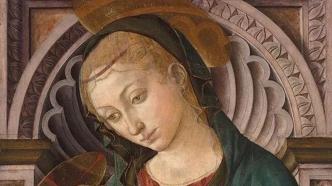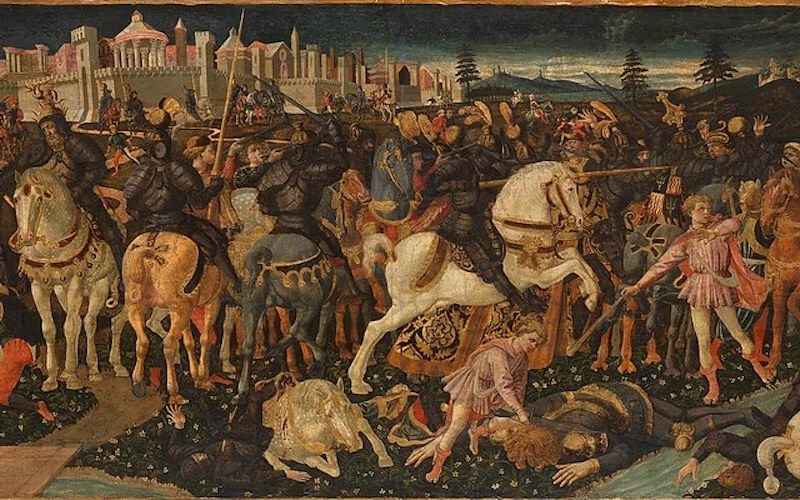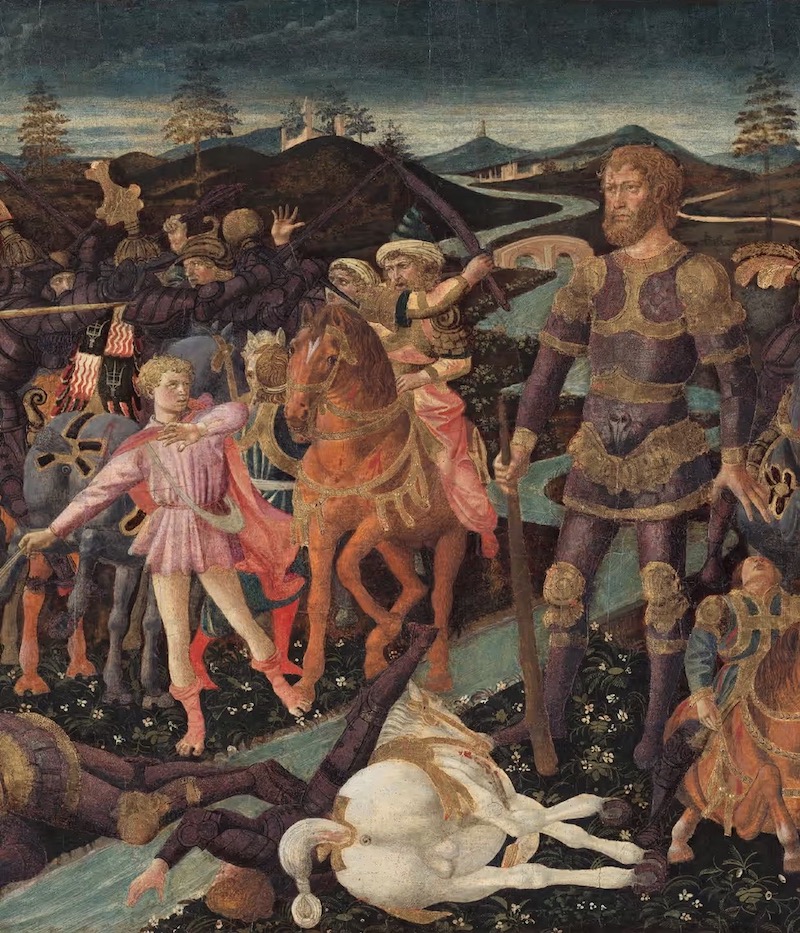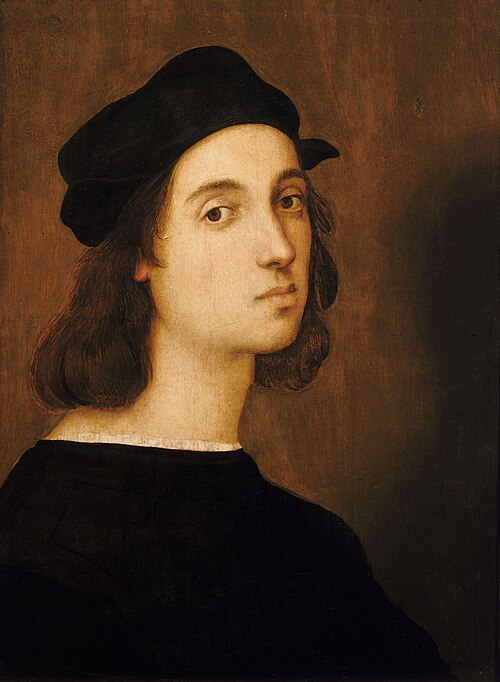
Francesco Pesellino (1422-1457) was born in an artistic family in Florence, Italy. His maternal grandfather and father were both professional painters. He was mainly active in Florence, where he received many commissions from the Medici family and collaborated with artists such as Fra Filippo Lippi.
Pesellino specializes in depicting architecture and animals, telling stories through pictures, and expressing intricate details on small canvases. He died young at the age of 35. Many of the paintings left in his studio so far have disputed signatures, causing his artistic legacy to be ignored by future generations for a long time. And now, the National Gallery is hosting Pesellino’s first exhibition, “Pesellino: The Renaissance Master Revealed.” Although the exhibition occupies only one exhibition hall, it is a room full of life, with bold and radical colors blooming in narrative scenes full of activity. Important exhibits in the exhibition include the "Holy Trinity of Pistoia" altarpiece and the newly restored "Story of David".
This is a story that influenced the history of art. After seeing Titian's new work in the studio, Michelangelo, a Florentine, praised Titian's paintings in person. (Michelangelo once visited Titian's studio to see the famous "Danaë") But on the way home, Michelangelo talked a lot about Titian's painting methods. Friend and biographer Giorgio Vasari praised Titian's pleasing coloring and style, "but it is a pity that the Venetian did not learn disegno from the beginning."

Pesellino, altarpiece "The Pistoia Santa Trinità Altarpiece"

Altarpiece "The Pistoia Santa Trinità Altarpiece" (detail), almost psychedelic blues, reds and golds
Over the centuries, the contrast between the "design" of Florence and the "color" of Venice has become a cliché. This even aroused William Blake's wrath against the Royal Academy, which promoted Venetian pastel colorism, contrary to true painting tradition.
The work of Francesco Pesellino in the National Gallery subverts this simplistic view. In this jewel-box-like art gallery, golden searchlights illuminate the colorful world of 15th-century Florence. From the Journey of the Magi to the Annunciation, Pescellino's paintings cover all the typical themes of Florentine artists from the early to mid-14th century.

Pesellino's "The Virgin and Child"
But it’s Pesellino’s intense, almost psychedelic blues, reds and golds that stand out. In Pesellino's painting "King Melchior Sailing to the Holy Land", the dawn sky shows layers of pink against the blue sky. His observations are delicate and his brushstrokes are free. This is not a rigid "design", you feel the light changing in your sight and realize that Pesellino has captured the beauty of the fleeting moment.
This may be the earliest painting depicting the beauty of dawn. The work predates the dawn of Northern Italy depicted in Giovanni Bellini's Agony in the Garden by a decade. The latter is also in the National Gallery, where it hangs in the exhibition on the New Venetian Renaissance.

Pesellino, "King Melchior Sailing to the Holy Land"
Pesellino was born in 1422 and died in his 30s. The works he left behind are scattered and often very small. In Vasari's Lives of the Artists, the biography of Pesellino is only one page and is very confusing. Still, Vasari knew, a century after Pesellino's death, that he had to appear in the book. Pesellino's talent is very outstanding. "If death had not taken his life prematurely, he would have done greater things."
In the mid-15th century, Pesellino worked in Florence. His career was short but successful, and he collaborated with artists such as Fra Filippo Lippi. Many of the paintings left in his studio so far have disputed signatures, causing his artistic legacy to be ignored for a long time by later generations. Nearly six centuries after Pescellino died of the plague, Britain's National Gallery seeks to resurrect the lost star and give him the appreciation he deserves. There is something noble, even bizarre, about this endeavor. This is his most complete retrospective exhibition, occupying only one exhibition hall. But this is a showroom full of life.

Pesellino's "The Story of David"
In the main exhibition, the colors of these paintings bloom again. Pesellino painted "The Story of David" on two low, wide boards, depicting David and Goliath. These narrative scenes were brilliantly restored in the gallery's studio and today their colors are as vibrant as Pesellino had intended. Among them, gold powder splashes, highlighting the details. Red hats, silk dresses, embossed armor and jeweled reins on horses make the cavalry team more lively.
At the same time, the poetry of Pesellino's colors is evident in the skies he depicts: the brightness of the foreground sets off the white, gray and blue low sky and obscures the day. The ground is dark green, almost black. This provides a resonant background for the flecks of pastel flowers painted by Pesellino. The arrangement of flowers is reminiscent of Botticelli's "Primavera".
If Pesellino excelled in color, it was only part of his keen eye for nature. In his work "The Story of David", the panels are filled with well-researched and lifelike animals. Lifelike dogs wander, sit, and smell the flowers. Horses run, rest, and die in battle.

"The Story of David" written by Pesellino (detail)

"The Story of David" written by Pesellino (detail)
Renaissance Florence was deeply influenced by biblical stories. In the story, David, a young shepherd boy, volunteered with only a stone and a slingshot to fight the powerful warrior Goliath, and hit Goliath on the forehead with a stone. David is regarded as the symbol of this small city republic. He defied giant enemies such as Milan and the Pope and was sculpted by Donatello, Verrocchio and Michelangelo. Heroic image. Pesellino, however, tells the entire story in the form of a gilded comic strip. At the heart of the story is a brutal battle, a brutal battle so close that it's impossible to tell who is who.
This realism is not pacifism. Outside the walls of Florence, armored knights fought to win the hearts of their ladies.
The exhibition is right to place the story of this work at the center of the gallery. This is a masterpiece. Like many masterpieces of the Florentine Renaissance, this one was most likely made for the Medici family (the wealthy bankers who became the unofficial rulers of the "Republic"). Even as the Medici corrupted the city government, they commissioned many statues of David to demonstrate their republican fervor. Pesellino's paintings are thought to have decorated the cabinets of the Medici palaces.

Pesellino's "The Life of Griselda" (detail)
Giants, dogs, knights, the awe-inspiring sky: these beauties and wonders described by Pesellino were once part of everyday life in the city of Florence. In this city, cabinets and bedside tables are artistic wonders. The context for these works no longer exists, but the joy remains.
The exhibition will be on display until March 10, 2024.
(This article is compiled from "The Guardian", the author Jonathan Jones is an art critic)


